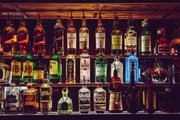Got a leftover UV light at home? Try this “spot check” trick!
- Replies 2
If you have ever bought one of those Hough-brand rapid antigen test kits at your local supermarket or chemist, chances are you still have that handy blue light – the one used to illuminate the test to observe the results – that comes with the box.
Don’t throw it out yet!
Aussie mums on social media are sharing another useful trick on how to repurpose this little gadget, and you might find it handy too.
A mum has shared another way to use the UV lights from rapid antigen tests. Credit: Facebook.
Apparently, you can also use them to check how well you apply your sunscreen!
She tested the trick by applying sunscreen to her hand and running it under the blue light that came from the RAT kit.
Under the blue UV light, the parts of the skin properly covered by sunscreen shows up darker than the parts that are not well-covered.
So if you ever run your skin under a blue light after applying sunscreen and see some white areas, that means you might have missed some spots!
Under the UV light, sunscreen comes up dark and spots not covered with it turn white. Credit: Facebook.
One mum even said that she might use it to “spot check” her children, making sure they’re well covered in sunscreen.
Meanwhile, other members suggested alternative uses for the torches.
One user wrote that these blacklight torches can be handy in your travels. Apparently, you can use them to check if the cleaners really did clean your room properly after the last guests.
Another user suggested using the blue light to spot cat wee on your carpet. “It’s what professional carpet cleaners use to find the spots to treat,” they said.
A few users also recommended donating your leftover blue lights to a local vet clinic, animal shelter, or wildlife carer as they can be used to detect skin problems on animals.
UV lights are great tools for seeing and observing things that are normally invisible.
When ultraviolet light hits certain objects, they can “glow” – a phenomenon also called fluorescence. Many household objects and substances such as paints, dyes, minerals, and body fluids exhibit this.
So if you’re curious about what other things would “glow” under a UV light, check out this video below!
Credit: Geek Hoodlum.








